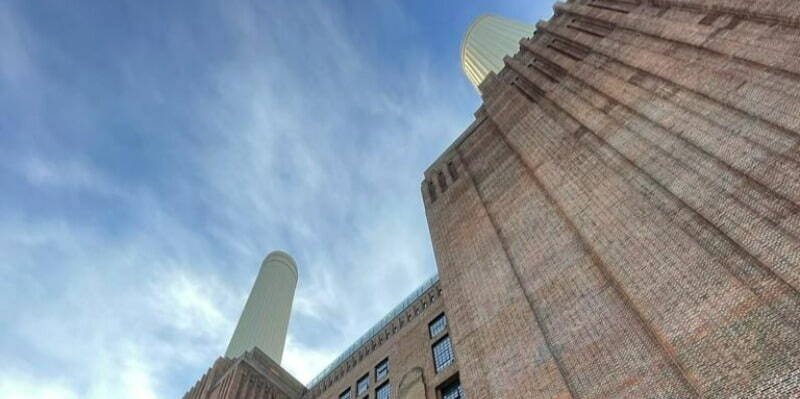
"For two generations, it has been London’s great intransigent pile, a black hole of dashed dreams and hot cash that defeated every madcap scheme thrown at it, from a theme park to a football stadium and a 300-metre “eco tower”. As time went on, and the structure became ever more weather-damaged after the roof was removed in the 1980s, many thought it would simply have to be pulled down. But it was the stubborn relative that refused to die."
Editor, Oliver Wainwrightcaptures the story behind Battersea Power Stationperfectly in the quotation above written in the The Guardian. What an incredibly interesting development and one that has been redeveloped into an extremely exciting and modern asset for London.
The recently opened 9bn project that transformed a former industrial brownfield site into one of central London’s largest and most grandiose developments will attract on average 40 million people plus each year. Our marketing manager, Beatrice, visited Battersea Power Station this week and has done a bit of research on the development.
Here's what she found out...
Who owns the development?
The Battersea Power Station site is owned by a consortium of Malaysian investors comprising PNB, Sime Darby Property, S P Setia and the Employees’ Provident Fund. The development management of the project is being undertaken by British based, Battersea Power Station Development Company.
Who designed it?
The project was designed by a range of specialist architects including SimpsonHaugh and Partners and De Rijke Marsh Morgan in Circus West Village, WilkinsonEyre in Battersea Power Station and Foster + Partners and Gehry Partner in the Electric Boulevard, Battersea Roof Gardens and Prospect.
More about the design on WilkinsonEyre website...
“It has been a privilege to restore and transform this iconic building, not only saving and celebrating the original features but creating interventions which bring the structure alive again. I’m excited that these incredible volumes – the Turbine Halls and Boiler House – will, for the first time, be open to all. We’ve taken great inspiration from Sir Giles Gilbert Scott in everything from the drama and scale right through to individual material choices and I hope this is reflected in the experience of residents and visitors.” - Sebastien Ricard, Director at WilkinsonEyre
What is in the development?
The Power station is home to Apple’s London Campus, multiple shops in the historic turbine halls, a c.2000 capacity event venue, 18,500 sq ft food hall, residential space for hundreds to live in and a glass chimney lift.
The power station has 3 million sq. ft of commercial space alongside new residential space. The development has more than 250 shops, cafes and restaurants, a theatre and hotel. There is 19 acres of public space including 6 acres of parkland and 450 metres of river frontage.
“Set across six floors within the upper Boiler House, the office space is attracting the cream of international creative tenants interested in new ways of working, open plan spaces and an industrial aesthetic. Apple are the largest tenant occupying more than 46,000m² across six floors.” – WilkinsonEyre website
“Lift 109 is a glazed elevator car experience that carries visitors up to the top of the building’s 50m northwest chimney. Carrying up to 30 passengers, it will emerge 109m above the ground, to reveal 360-degree views across London. The attraction will be open to the public as well as be available for private events; the experience is rounded off with an exhibition on the Power Station’s history in Turbine Hall A.” – WilkonsonEyre Website
What were the planning problems faced?
An article written by Joey Gardiner in Building Magazine online states that in 2017, the construction costs for the power station’s rebuilding alone increased by at least £400m.
“The cost of rebuilding the chimneys, for example, was more complicated than anticipated, rising from £28m to £48m. The cost of the underground energy centre between the power station and the river quadrupled from £17m to £62m. Most extraordinarily, after initial surveys based on limited access to the building put the cost of dealing with asbestos at just £190,000, the reality was several orders of magnitude tougher, and asbestos costs soared 200-fold to £44m.”
Brexit, the introduction of stamp duty and the pandemic made things difficult for the planning of residential space in the power station. It impacted the ability to sell property however, it did not stop any investment.
